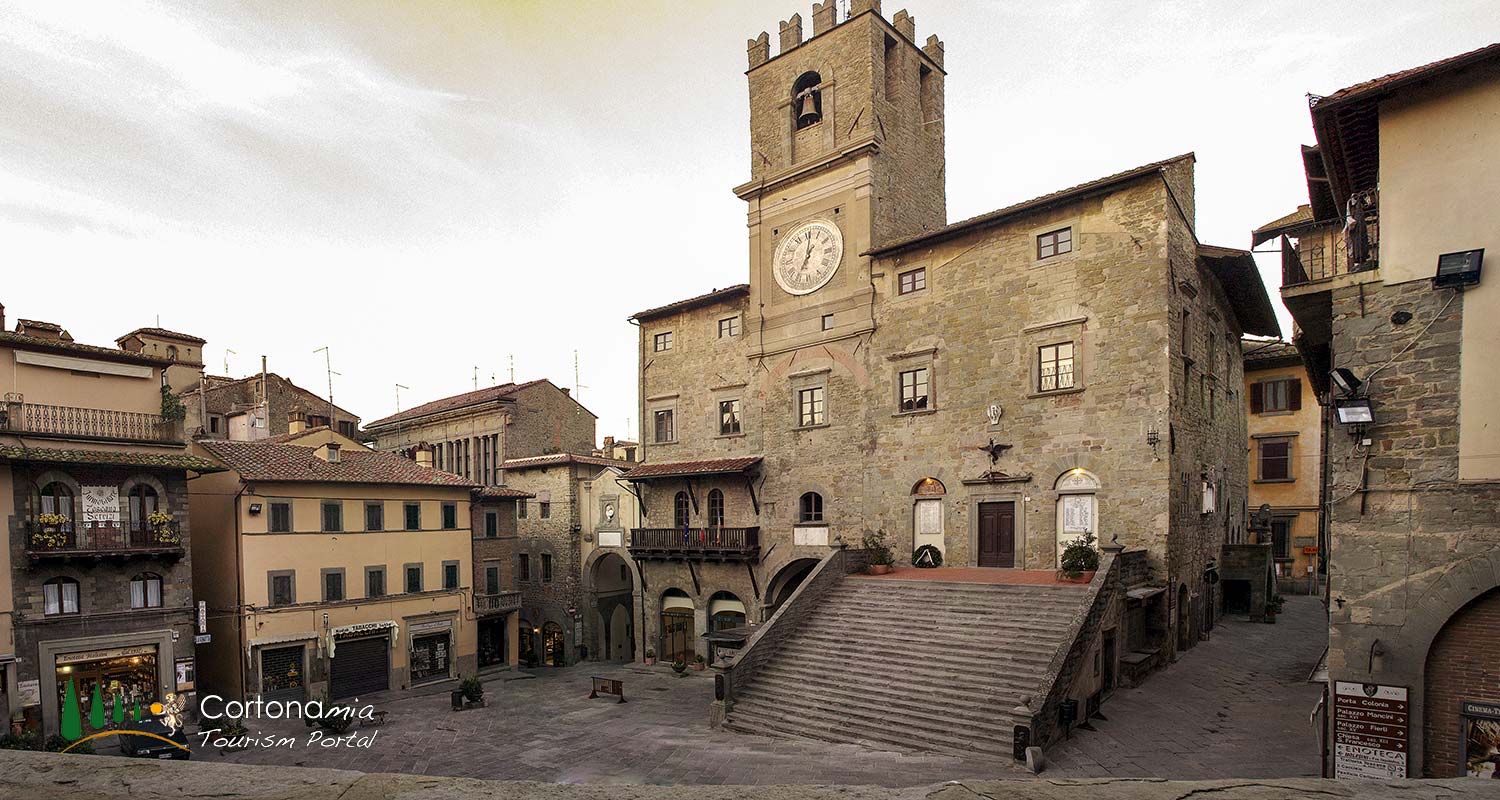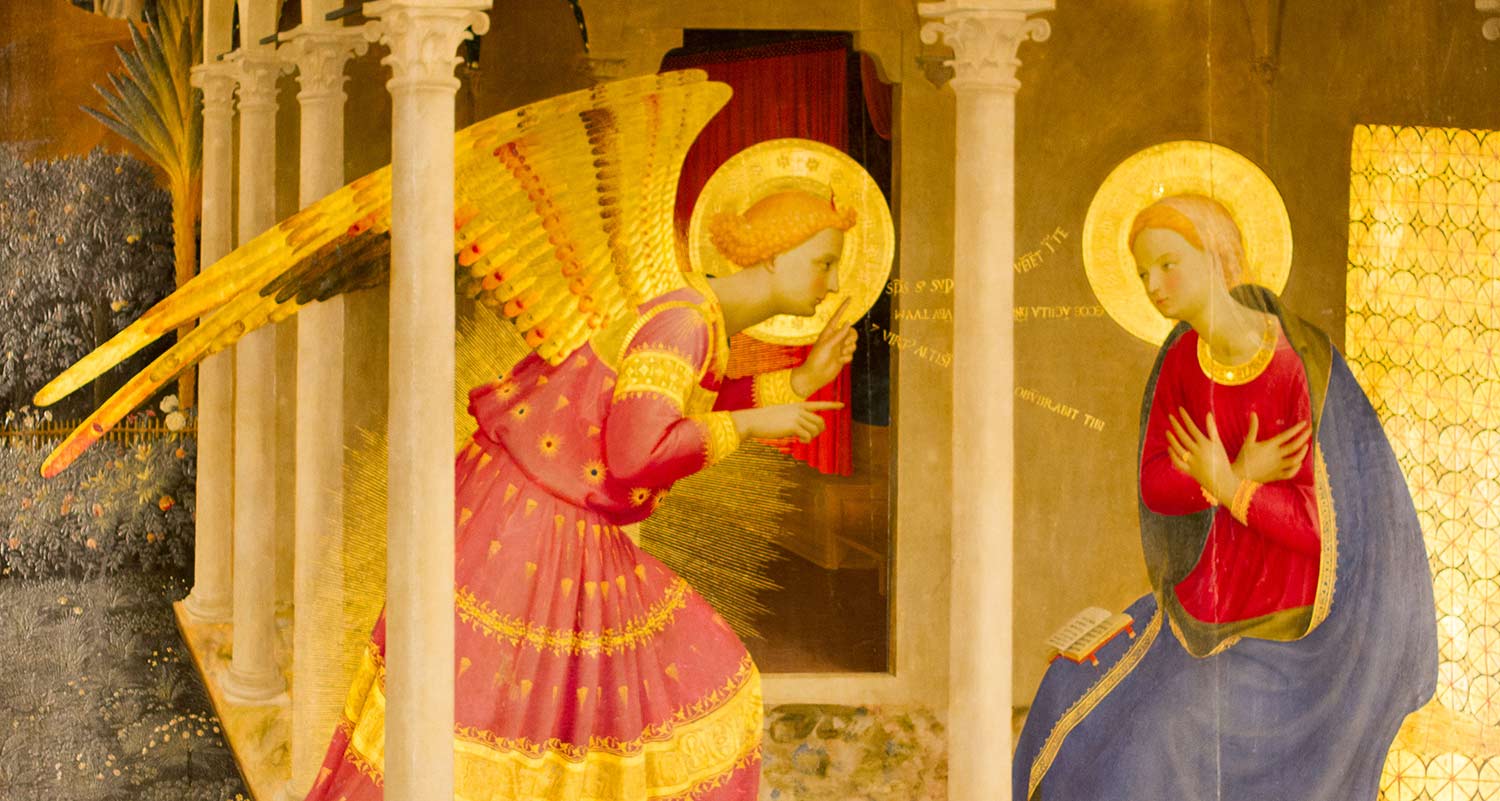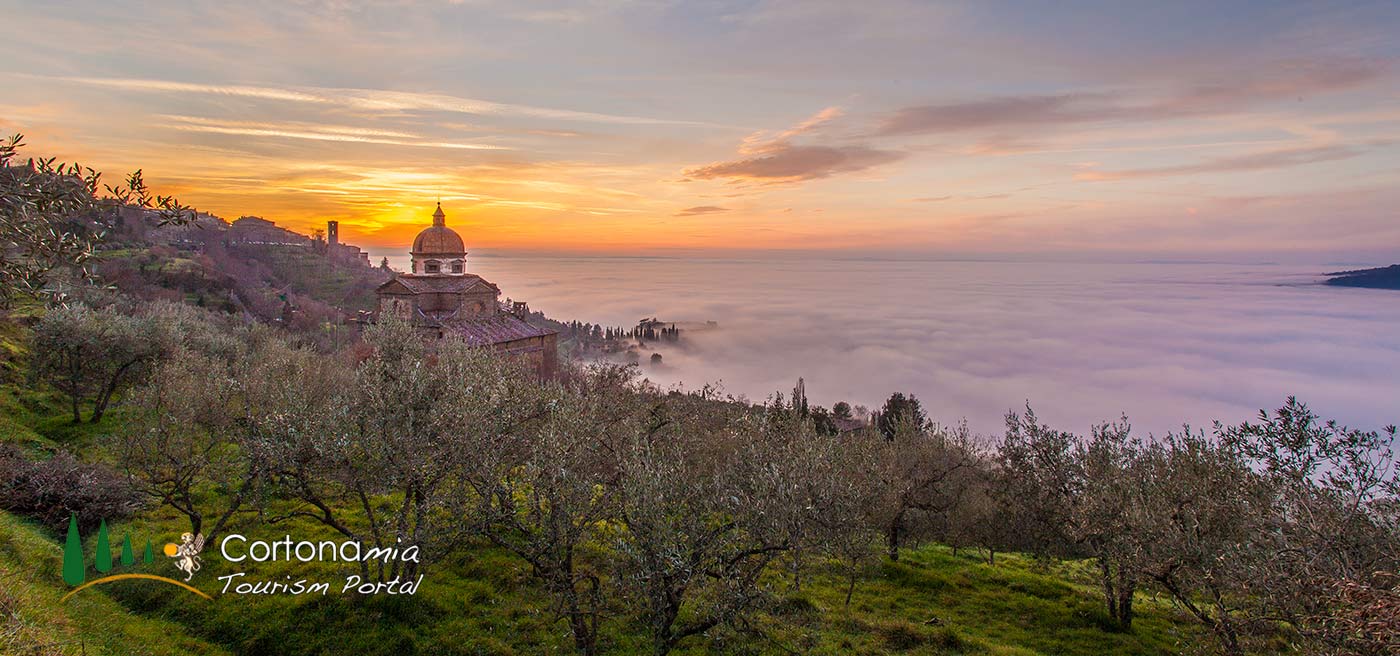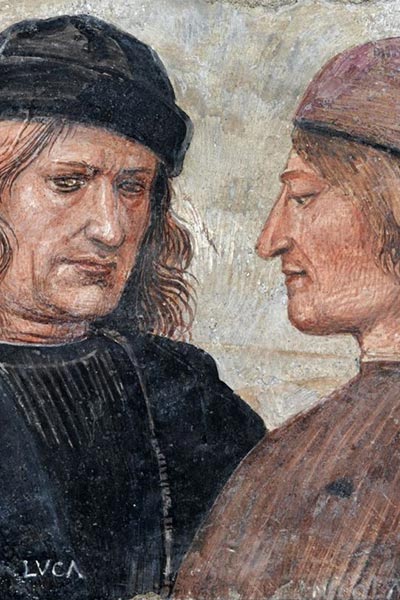10 Best things to do in Cortona
When visiting the charming town of Cortona, there are a number of must-see attractions that should not be missed.
We’ve put together a list of 10 of the best things to do in Cortona, all of which can be seen within one or two days. Some of the top highlights include:
1 The Historical center
Cortona’s Piazza della Repubblica is located on the slopes of a hill and is surrounded by well-preserved walls. On the east side of the square stands the Palazzo del Popolo, which was originally built in the 14th century and later rebuilt in 1514. The west side of the square is dominated by the imposing Palazzo Comunale, which dates back to 1241 and has undergone several renovations and expansions, including a less successful restoration in 1896. The Palazzo Comunale features a battlemented clock tower from 1509 and a flight of steps from the 16th century. To the northwest of the Town Hall is the Piazza Signorelli, which is home to the Palazzo Pretorio. The facade of this building bears the coats of arms of former podestàs and now houses the Accademia Etrusca and the Museum of Etruscan Antiquities. Piazza Garibaldi is a square that offers a wide view of the Val di Chiana, Lake Trasimeno, and Montepulciano. The square has an obelisk dedicated to Giuseppe Garibaldi in its center. Visitors can stop here to enjoy the breathtaking panorama.
ITINERARY OF THE HISTORICAL CENTER
The itinerary will guide you through the numerous palaces, churches, and monuments that can be found within the walls of this historic town.
2 MAEC MUSEUM
Museum of the Etruscan civilization
Cortona’s civic museum at Piazza Signorelli offers a fascinating and eclectic collection that goes beyond the Etruscan limits suggested by its name. The Accademia, a historical institute founded in 1727, numbered Voltaire among its early members. The museum MAEC occupies one of the town’s more impressive medieval palaces, the 13th-century Palazzo Casali (or Palazzo Pretorio), former home to Cortona’s leading medieval family.
The main hall contains a famous and unusual 5th-century bc chandelier. The largest object of its kind ever found, it consists of a gorgon’s head surrounded by dolphins and stylized waves, its 16 small oil lamps formed by alternating male and female figurines. Attic vases, bronze figures, and Roman statuettes line the walls, together with paintings by Pietro da Cortona and Luca Signorelli, both natives of Cortona (as well as works by Pinturicchio, Cristofano Allori, and more minor artists). Rooms off the hall include further paintings, notably a triptych by Bicci di Lorenzo, as well as (poorly labeled) fans, ivories, weapons, porcelain, miniatures, coins, and jewelry. Best of this miscellany are several medieval ceramics and an Egyptian collection amassed in 1891 by the Vatican’s Egyptian legate.
You can find the timetables on the official website at this address:
https://cortonamaec.org/it/orari-e-tariffe/
You can find updated prices on the official website at this address:
https://cortonamaec.org/it/orari-e-tariffe/
It is located in the historic center, within walking distance
About one and a half hours
3 Diocesan Museum
The museum is a rather gloomy former church whose interior is enlivened by a small but prestigious collection of Renaissance paintings. Perversely, however, it opens with a 2nd-century Roman sarcophagus, whose carved centaurs and battle scenes were apparently much admired by Donatello and Brunelleschi. The fresco fragments here include The Way to Calvary by the Sienese master, Pietro Lorenzetti.
Two paintings by Fra Angelico dominate the gallery propera sublime Annunciation (1428-30) and a triptych of the Madonna and Child with Saints. Both were painted during the artist’s 10-year sojourn in Cortona’s Dominican monastery (the triptych’s predella depicts scenes from the life of St. Dominic). The room also contains three works that would be outstanding in any other company: a Crucifix by Pietro Lorenzetti; Sassetta’s Madonna and Child; and Bartolomeo della Gatta’s Assumption of the Virgin. Lorenzetti has another beautiful painting in the room beyond, a Madonna Enthroned. Local painter Luca Signorelli is also well represented by a Deposition and Communion of the Apostles.
Summer opening hours: (from April 1st to October 31st)
Every day from 10.30 to 18.30
(closing from 13.30 to 14.00)
Winter opening hours: (November 1st to December 24th)
Friday, Saturday and Sunday from 10.00 to 17.00
FROM DECEMBER 26 TO JANUARY 8
Every day from 10.30 to 18.30
(closing from 13.30 to 14.00)
FROM 10th JANUARY TO 31st MARCH
Friday, Saturday and Sunday from 10:00 to 17.00
Closed on December 25th
Contacts
Tel: +39 0577-286300
Address: Piazza del duomo, 1 Cortona
cortona@operalaboratori.com
Full Ticket: € 6.00 audio guide included
Reduced and Reduced Groups: € 4.00
Reduction
Groups (minimum 15), children aged 6 to 12, religious
Free entry
Children up to 5 years old. Disabled people with escort (possibility of access only on the ground floor).
Guides with recognition license. Residents in the municipality of Cortona.
It is located in the historic center, within walking distance
About two and a half hours
4 The Monastery of Saint Francis “Le Celle”
The village of Le Celle, just 10 minutes from Cortona, the Monastery of Celle is a sacred building that offers a stunning view of the Valdichiana (Chiana Valley). This monastery, built at the edge of a narrow valley, is known for its spiritual significance and was the first monastery built by St. Francis of Assisi in 1211.
He lived here even after receiving the stigmata and it is believed that he dictated his Testament here in 1226, just a few months before his death. Visitors can still see his cell, complete with some of his personal objects, and the oratory of his first followers. Today, the Monastery of Celle is home to a brotherhood of seven Friars who continue to carry on the tradition of prayer passed down by St. Francis.
Always open
From 7.00am to 07.00pm
Address
Strada dei Cappuccini 1 Cortona
Free admission
10 minutes by car and 50 minutes of walking distance
About one hour and half
5 Fortress of Girifalco & church of Santa Margherita
THE FORTRESS
The Fortress of Girifalco in Cortona, Italy, has a probable Etruscan origin. It was first used by the Goths and later by the Lombards during the Barbarian invasions. However, records of the fortress date back only to 1258, when it was purchased by Arezzo. The fortress underwent numerous renovations and restorations starting in 1266, and continuing into the 16th century under the rule of the Casali family. The Sienese also carried out reinforcement work when they were allied with the inhabitants of Cortona in a battle against Arezzo and local Guelfs.
The Florentines, who had owned the fortress since 1411, made the most significant changes, giving the fortress its current architectural appearance. In the 15th century, the central body of the fortress was constructed and Cosimo I de’ Medici also worked on it in the 16th century. After inspecting all fortresses recently acquired by Florence, the Grand Duke was impressed by the unique position of the Cortona’s stronghold and decided to transform it into one of the most imposing bulwarks of the Medici power in the territory of Arezzo. Despite being financed by Florentine money, the local population also contributed through heavy taxation.
The fortress now had a trapezoidal perimeter of walls with four large bastions dedicated to St. Margherita, Santa Maria Nuova, St. Egidio, and St. Giusto. The post of the garrison, powder magazine, and prison were located inside. The walls were built using cutting-edge methods with a terreplein at the base to soften gunshots. The town immediately benefited from the new restructuring, allowing it to defend itself from the pressure of the Sienese and the State of the Church.
However, with the new atmosphere of peace and stability in the 17th century, the Grand Dukes’ interest in military construction began to weaken in favor of luxury residential palaces. As a result, the fortress gradually lost its importance and became the base of a small garrison acting as a town police.
THE CHURCH
The shrine is dedicated to the figure of Santa Margherita, patron of Cortona and Franciscan tertiary, and subsequent cultural and spiritual activities of the Observant Franciscans. On the death of the saint (February 22, 1297) it was decided to build a church in her honor, next to the ancient church of St. Basil that Margaret herself had restored after it is chosen as the place of penance and prayer. In 1304 the sacred building was already built, but it continued to embellish it with important frescoes throughout the fourteenth century.
This cycle mural have come to us only a few fragments preserved in the Diocesan Museum, but examples preserved in a code of the seventeenth century that documents with twenty scenes watercolor murals lost in 1653 when, because of their poor condition, were whitewashed. The analysis of the surviving fragments leads to date them around 1335 and to attribute them to the workshop of one or both of the brothers Lorenzetti. In 1385 the church was entrusted to the monks Olivetani, replaced in 1389 by Minor who still have care and welcome visitors. In August 1927 he was elevated to the rank of minor basilica.
Girifalco Fortress Hours
March 1st – March 31st
from 10.00 to 18.00 (Sat-Sun)
1 April – 16 June
from 10.00 to 19.00
June 17 – September 3
from 10.00 to 20.00
4 September – 1 October
from 10.00 to 19.00
2 October – 1 November
from 10.00 to 18.00
November 2 – December 22
from 10.00 to 17.00 (Sat-Sun only)
December 23 – January 7
from 10.00 to 17.00
January 8 – February 29
from 10.00 to 17.00 (Sat-Sun only)
Telephone: +39 0575 637235
Address: Piazza di Santa Margherita da Cortona
ADMISSION TICKETS
€ 5.00 Adults
€ 3.00 reduced
THE ENTRY TO THE CHURCH OF S. MARGHERITA IS FREE
About 2 km from the historic center, reachable on foot or by car
Visit to the Girifalco Fortress: an hour and a half
Time to visit the church of S. Margherita: about half hour
6 Etruscan tombs
The Archaeological Park of Sodo is located about 4km from the bottom of the hill of Cortona. The park is situated on the right bank of the Rio Loreto and contains the Melone tumulus, an example of archaic Etruscan funerary architecture. The tumulus, which is an artificial mound, was excavated in 1909 and is made up of a long uncovered dromos (entry-corridor) leading to a five-chamber area.
The central chamber is surrounded by four chambers that open onto the central corridor. The tomb features a pseudo overhanging vault. Excavations in 2003 uncovered part of the original socle. The Melone II of Sodo is also located on the right bank of the Rio di Loreto and dates back to the archaic period. It contains two separate inner tombs, Tomb I which features a pseudo-vault roofing was unearthed in 1928/9 and Tomb II discovered in 1991, which contained a wealth of golden grave goods. In 1990, excavations uncovered a monumental altar-platform on the east side of the mound perimeter, which is accessed by a stairway with decorated side-walls featuring reliefs and sculptural groups.
Everyday
from 10.00 to 14.00 and from 15.00 to 18.00
Closed on December 25th, January 1st and Easter
Not available
15 minutes by car
About two hours
7 Church of Santa Maria delle grazie
This outstanding 15th-century Renaissance church is located on the winding approach road to Cortona (2 miles from Porta Sant’Agostino). It was built on the site of a tannery (known as a calcinaio after the lime used in the tanning process) to house an image of the Virgin that had miraculously appeared on the tannery walls. Similar High Renaissance churches, built on the Greek cross plan and with a central dome, are to be found at Prato, Montepulciano, and Todi (in Umbria).
Architecture
Entering on the Sanctuary of Santa Maria delle Grazie, it affects the sense of emptiness full of presence. The Church is essential in its construction and it is beautiful because it is essential, and any enrichment Baroque offends. Its architecture is a clear geometric scanning, it is made up of lines and arcs that intersect each other, white and gray alternating, niches, overhangs, frames, wheels, all marked by sobriety, linearity (the style of Brunelleschi) to give the sense of sacredness that is when we are at the “Presence”. The effort expressed by the artist is precisely due to the attempt to achieve a place in everyday life and work, a temple dedicated to the Presence. The artist has managed, through its architecture, majestic outside and essential inside, and through space and light, to give to anyone entering the Sanctuary the sense of being immersed in the sacred, conducted in front of the reality of God that fills the his house, his place of sacredness and immensity. The work reflects the power of the genius of the artist for his grandeur, while the interior is linear and bare. It contains within itself all the main features of Renaissance art and architecture: the geometric perspective that organizes space, simplicity, geometric lines. The structure of the church consists of a nave flanked by two side chapels with a transept and a dome at the intersection of the equal arms of the presbytery. Martini designed it strictly applying architectural principles of proportion and perspective dear to Renaissance architecture. Spaces resonate the Alberti echoes, in a project that is not immune to similarities with Brunelleschi, but the designs of Francesco di Giorgio are absolutely original, to the point of being one of the highest levels of the synthesis of the spaces in the Renaissance.
For information and reservations, please contact the following telephone numbers:
Sanctuary manager (Italian language is require)
Cosimi Don Ottorino +39 349 12 15 401
Amici del Santuario +39 329 16 05 624
Address: località Maestà del Sasso Strada Provinciale Umbro Cortonese
Free admission
10 minutes by car, about 30 minutes by walk
About 1 hour
8 Church of Santa Maria Nuova
The church of Santa Maria Nuova is located just outside of the walls of the town of Cortona. The church was built to house a miraculous image of the virgin that previously had been in a private chapel. Construction was begun in 1550, and the church was consecrated in 1610. The original church design is attributed to Giorgio Vasari, and modified by Battista Cristoforo Fanelli. Nestled half-way up and against a hillside, the ground plan is a square, and the church is surmounted by a dome with a lantern, completed in 1600. The high altar was completed Cortonese artist Bernardino Radi. The altarpiece to the right of the entrance holds an altarpiece by Alessandro Allori, depicting the Birth of the Virgin Mary (16th century). The Rosette window on the facade was designed by Urbano Urbani (16th century) and depicts an Adoration of the Magi.
9 Villa Bramasole
An American writer purchased and restructured a villa in Tuscany, above the town of Cortona, where he began to spend his summers. The scenery is lovely, the climate mild, and the food delicious. Charmed by the idyllic lifestyle, marked by the rituals of the countryside, he wrote a memoir that captivated America with its beautiful descriptions of the environment, as well as the quality of the writing, which evocatively and intensely conveyed the joy of living amidst the colors, smells, flavors, recipes, and suggestions he collected while exploring Italy.
Today, the villa is a destination for thousands of tourists, particularly foreigners from all over the world, who come to visit and savor the atmosphere portrayed in the best-selling book “Under the Tuscan Sun.” The villa can be reached by foot with a nice walk starting from the public gardens in Cortona “Parterre,” about half an hour on foot for a distance of about 4 Km.
Always visible. It is advisable to go during daylight hours.
Free admission
reachable in 40 minutes of walk from the historic center
About 1 hour
10 Tanella of Pitagora
Descending the hill of Cortona among the olive groves a rare beauty you can visit, the Tanella of Pythagoras a famous monument known to travelers since 1500, the Tanella is a small mound of the Hellenistic period (II if BC.) Consists of a circular base on which you set another drum with blocks juxtaposed. The interior has a short dromos and a small rectangular room covered by a barrel vault. The first news that we have on it is attributable to a visit by G. Vasari in 1566 that looks like the judge the tomb of Archimedes. Since then, visitors have indulged in the building who in recognizing the tomb of Ulysses, the other that of Pythagoras, recalled at the awards greek–style of Hellenistic architecture. The monument underwent progressive deterioration from five nineteenth century, when French troops passing through they have caused a considerable damage. The most recent criticism puts its dating to the second century. C. It was donated to the Accademia Etrusca in 1929 by Mrs. Mary Laparelli Pitti. . The Tanella can be reached by car or by hiking trails.
Always visible. The tanella is protected by a fence. (not lit up at night)
Free admission
1.3 Km from the historic center, reachable on foot or by car
Half hour
Bonus Via Jannelli

A taste of the medieval flavor at the vicolo Jannelli (which takes its name from the Jannelli family). The road surmounts from the high rear facade of the church of the Gesù and is one of the most suggestive streets of Cortona, surely the street is the most characteristic of all because the houses that compose it on the north side are the remains of fourteenth-century structures and sixteenth-century wooden projections. The ancient medieval houses are built of stone and brick, while the jambs, the thresholds and the architraves are exclusively in stone. The upper floors of the house project onto the street and are supported by wooden shelves.
Always visible, it is advisable to visit during daylight hours
Free admission
5 minutes walk from piazza della Repubblica or piazza Signorelli
About 20 minutes













